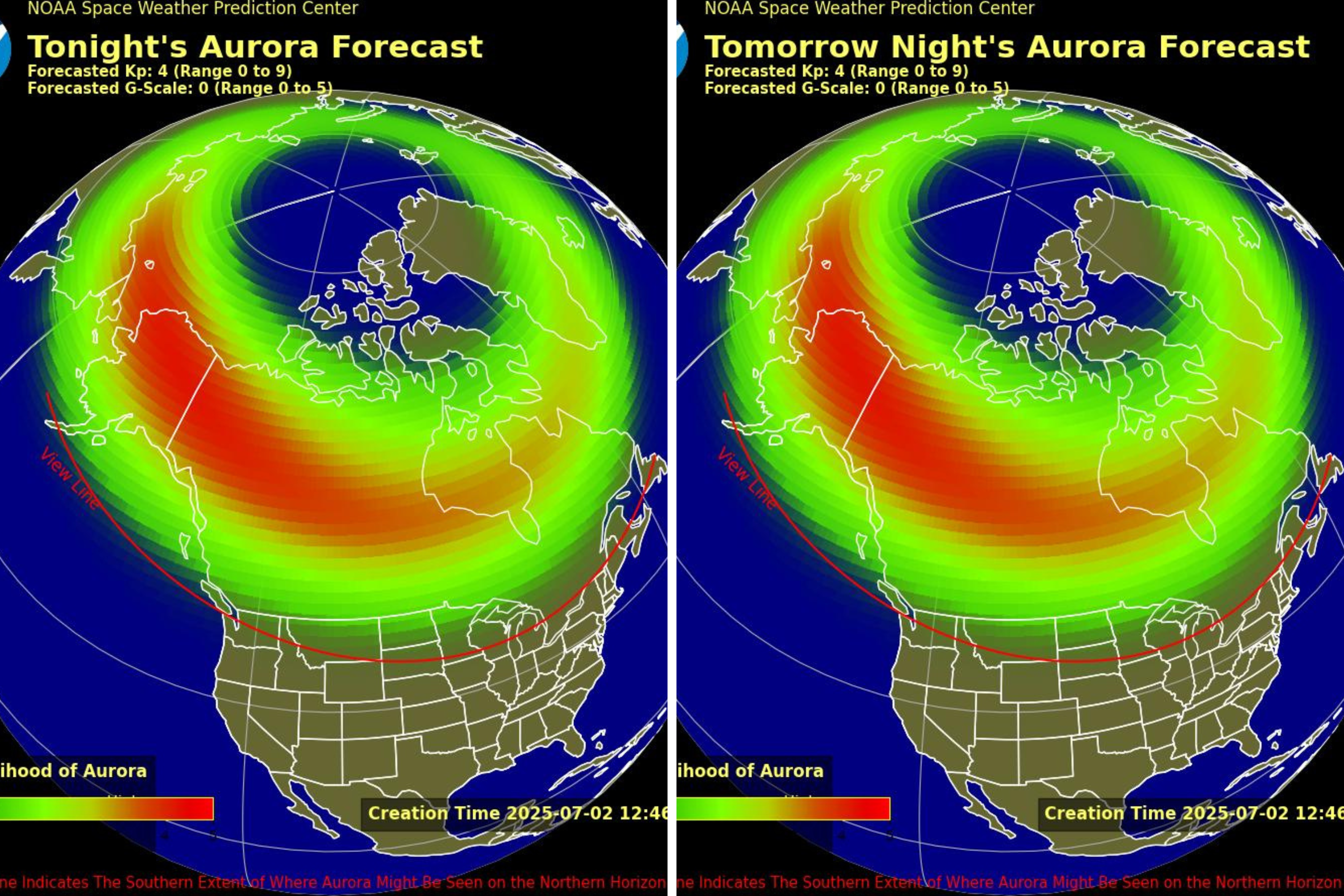By Maria Azzurra Volpe
The northern lights might be visible in parts of the country on July 2 and 3.The Space Weather Prediction Center of the National Oceanic and Atmospheric Administration (NOAA), has issued a G-1 class geomagnetic storm warning, which could cause aurora borealis to be visible in most of the northernmost states.With a geoplanetary disturbance rating of four out of a possible nine, stargazers can expect quite a spectacle of lights.A map provided by NOAA shows tonight and tomorrow’s view-line, which represents the southern-most locations from which you may see the aurora on the northern horizon.The light show is expected to include Washington, Montana and North Dakota all the way to Vermont and Maine.The bright green color on the map shows all the places where the aurora will be visible as a result of the geomagnetic storm. The red spots show the places where the aurora is forecast to be more intense.Not visible in daylight, the best times to observe northern lights is just after sunset or right before sunrise. As long as the sky conditions permit, it cam be observed from as far as 621 miles away.NASA explains that these colorful, dynamic lights are the result of particles from space colliding with atoms and molecules in the atmosphere.They can appear in a variety of colors, from an eerie green to blue and purple to pink and red, depending on the type of gas that is excited by the impacts and the altitude.Oxygen molecules typically glow green and red. Green occurs roughly between 60 to 120 miles altitude, and red usually above 120 miles.Nitrogen from about 60 to 120 miles glows blue, although depending on the type and energy of the particle it is interacting with, it can also give off both pink and blue lights. Below about 60 miles, this gas can give the lower edge of the aurora a reddish-purple to pink glow.The northern lights can only be seen in the dark, away from city lights. Even moonlight can diminish the apparent brightness of the aurora.Pollution and weather conditions like rain or clouds may also impact your ability to see the aurora. When trying to spot the lights, the Canadian Space Agency suggests looking all around you, not just north, as auroras may appear anywhere in the sky.Do you have a science story to share with Newsweek? Do you have a question about northern lights? Let us know via science@newsweek.com.
